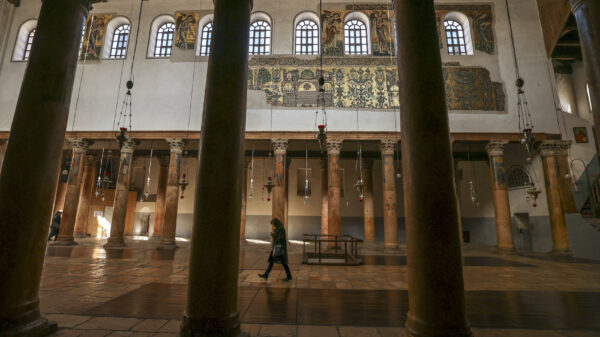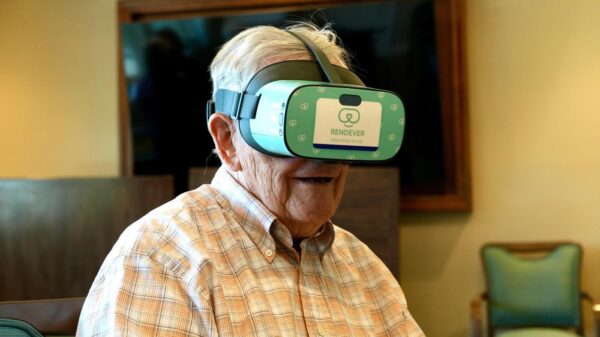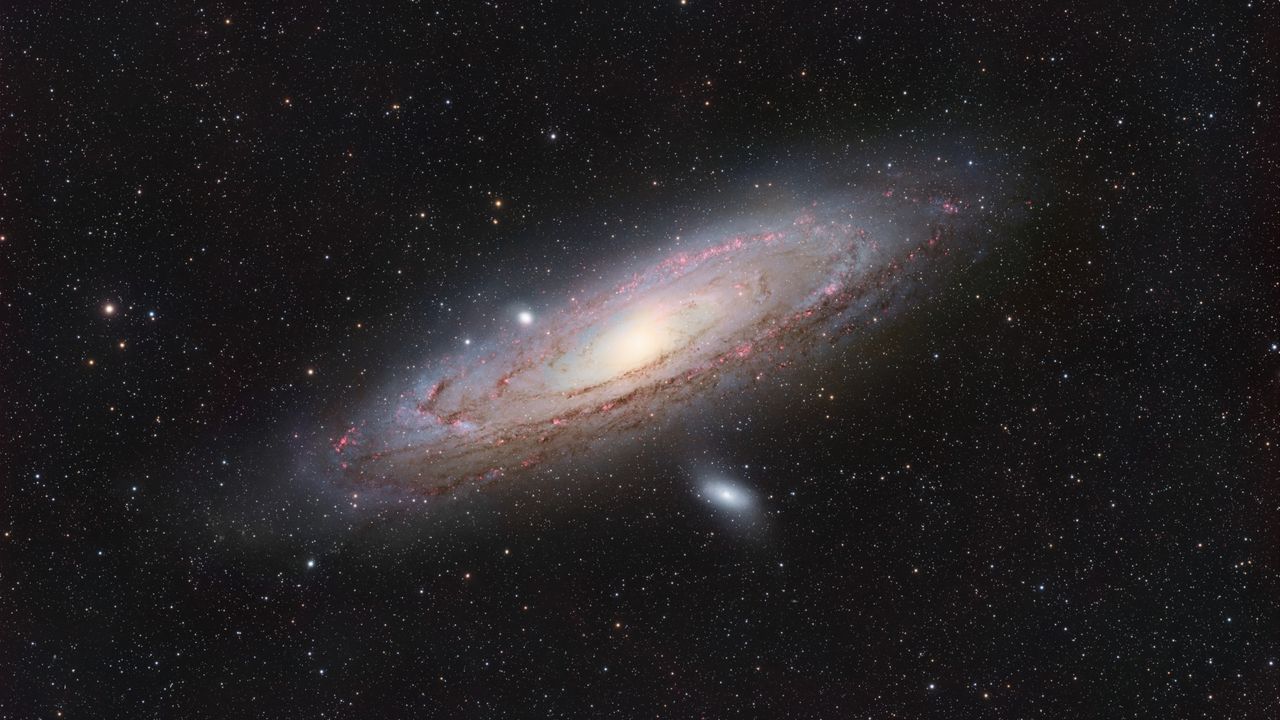Astrophotographer Ronald Brecher has unveiled a breathtaking image of the Andromeda Galaxy, showcasing its intricate details from a distance of approximately 2.5 million light-years from Earth. This remarkable portrait reveals the galaxy’s sweeping spiral arms, which span about 260,000 light-years, illuminated by the intense light generated from ongoing star formation.
The image captures dense dust lanes that coil around Andromeda’s radiant center, thought to harbor a supermassive black hole estimated to be 140 million times more massive than our sun. Brecher also highlights nearby celestial bodies, including the bright satellite galaxy M32, visible as a luminous sphere at the upper edge of Andromeda’s disk. Below, the faint glow of the elliptical galaxy Messier 110 is apparent, hosting around 10 billion stars.
Brecher’s work is the result of 38 hours of observation conducted between August 17 and September 2, 2023, from his home in Guelph, Canada. He utilized a Sky-Watcher Esprit 70 EDX refractor paired with a QHY367C Pro camera to achieve the stunning clarity of his image. In a heartfelt statement on his website, Brecher reflected on the timeless nature of the light captured, noting, “Whenever I look at this galaxy — which is often with my naked eye — I think of the light reaching my eye having begun its journey before humans evolved on Earth. Pretty cool.”
Viewing Andromeda in the Night Sky
The Andromeda Galaxy can be located in the night sky by finding the star Mirach, the brightest star in the Andromeda constellation. It lies less than 10 degrees to the upper left of Mirach, particularly visible in the hours following sunset during late September. For reference, the span of a clenched fist accounts for approximately 10 degrees of the sky.
Recent astronomical studies have prompted a reevaluation of the long-held belief that Andromeda would collide with our Milky Way galaxy in roughly 4 billion years. Research conducted by Til Sawala from the University of Helsinki indicates a shift in the understanding of their future paths, stating that “the probability went from near-certainty to a coin flip.” This new perspective has implications for how astronomers view the dynamics of our local group of galaxies.
In an era where astrophotography continues to captivate both experts and enthusiasts alike, Brecher’s image stands as a testament to the beauty of the universe and our place within it. For those interested in sharing their own astrophotography, submissions can be sent to [email protected], inviting a broader community to engage with the wonders of space.








































































